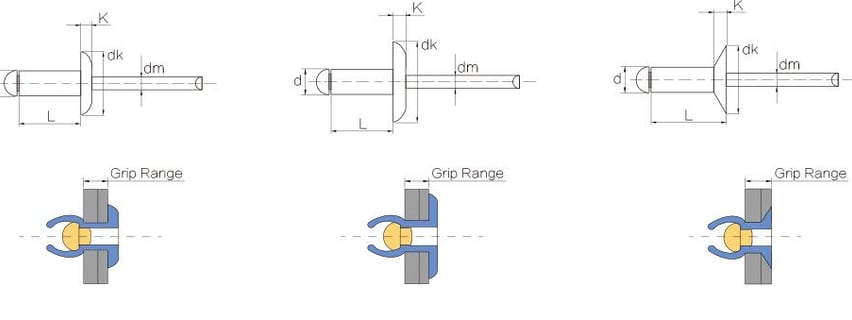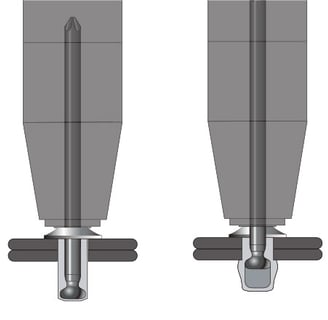

Material
Specifications
APPLICATION
The pop rivet serves as a specialized single-sided riveting solution, requiring a dedicated tool such as a rivet gun (manual or electric) for installation. It finds extensive utility in scenarios where traditional riveting methods are impractical, as it eliminates the need for access from both sides. This versatility has led to its widespread adoption across diverse industries including construction, automotive, marine, aviation, machinery, electronics, and furniture manufacturing. Among its variants, the open type round head pop rivets are most commonly utilized, while the countersunk head pop rivets are preferred for applications demanding smooth finishes, and the closed type pop rivets excel in situations necessitating high loads and sealing properties.
The Sealed Type Rivet is engineered to encase the nail head post-riveting, offering corrosion resistance. Particularly, the closed end blind rivet is ideal for applications requiring waterproofing, boasting exceptional shear force, vibration resilience, and pressure endurance.


Tips for blind rivets Select:
The drilling hole size of the rivet is min+0.1 max+0.2. The total thickness of the workpiece is generally 45% - 65% of the rivet length. It is better not to exceed 60%. Additionally, a too short working length is also troublesome. It is recommended that 50% - 60% prevail in general. If the rivet length is too long, the rivet pier head is too large, and the rivet rod is easy to bend. If the rivet length is too short, the pier thickness is insufficient, and the rivet head molding is incomplete, affecting the strength and tightness. It is not good if the rivet length is too long or too short. Only the proper length can achieve the best riveting effect. For example, if the total thickness of two or more workpieces is 6mm, the rivet length should be 9.23 -- 13.3 mm. In this case, it is better to use the 12mm long rivet.


